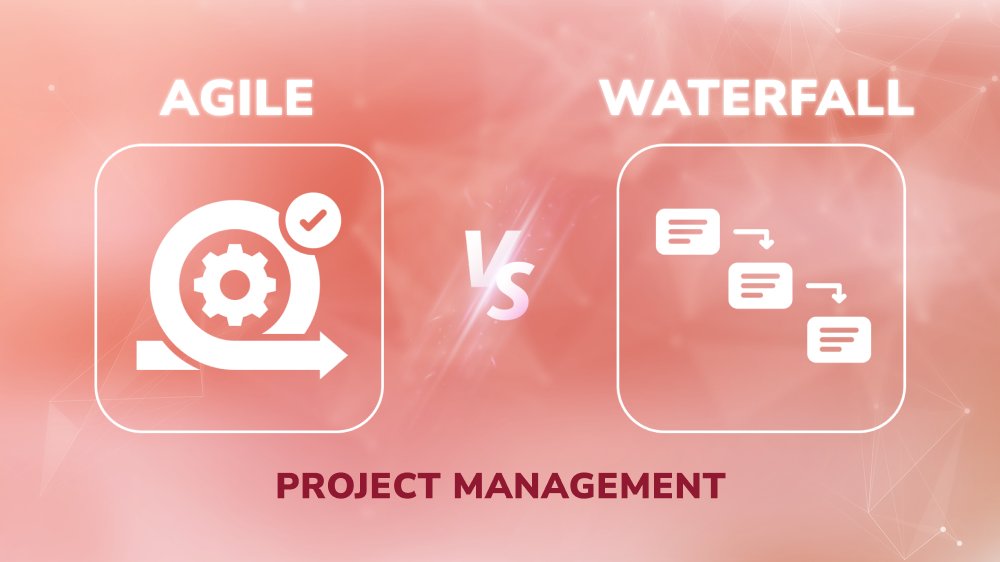
Revolutionize Your Code: The Magic of Data-oriented Design (DOD) Programming

Content Map
More chaptersAre you ready to revolutionize your code and unlock a world of possibilities? In the fast-paced realm of the vast majority of programming languages, staying ahead of the curve is essential for success. That’s where data-oriented design (DOD) programming comes into this page.
DOD is a programming paradigm that challenges traditional object-oriented programming approaches and places data at the forefront of development. By shifting the focus from objects to data, DOD programming opens up a world of incredible opportunities for optimizing performance, enhancing scalability, and unleashing the true potential of your code.
Imagine how transformative it would be to organize code in a way that maximizes speed, allows seamless scaling, and ensures peak performance. With data-oriented design, software developers can turn that vision into reality. It’s time to revolutionize the way you approach programming and revolutionize your code with DOD.
What is Data-oriented Design (DOD) Meaning?
When you hear the acronym DOD, you may immediately think of some concepts like Definition of Done (DOD meaning in project management), Department of Defense (DOD meaning in military services such as the Navy or Air Force), or even Drop on Demand (DOD meaning in printing). However, in the context of software development, DOD takes on a very specific meaning: Data-oriented Design programming.
Data-oriented Design, or DOD, is a software engineering approach and mindset that focuses on data as the central point of any application. Basically, DOD programming prioritizes efficient data organization, performance optimization, and scalability. Unlike the traditional OOP (object-oriented programming) paradigm that focuses primarily on objects and their behaviors, DOD programming places a strong emphasis on data and its manipulation. By centering on data, DOD programming offers a unique perspective that aligns perfectly with the data-intensive nature of modern projects.
There are several fundamental principles that define the DOD programming approach. At its core, DOD prioritizes the organization and management of data above all else. The main principles are:
- Data-centric Design: Applications are structured primarily around the data domain model, relationships, and access patterns rather than focusing on abstractions or object-oriented hierarchies.
- Explicit Data Flow: The flow of data through the system is made obvious in code through shared data structures and stateless functions. Data moves between components rather than deep method calls.
- Loose Coupling: By favoring data-driven decompositions instead of entity-oriented designs, DOD code naturally results in loosely coupled and independent functions/components that are easier to test, reason about, and parallelize.
- Performance Optimization: With data access patterns and usage given top priority, DOD programming leads to designs that optimize for speed, minimizing bottlenecks and maximizing cache locality.
Traditional OOP approaches tend to model real-world concepts or abstractions as “objects” that encapsulate both data and behavior. In contrast, DOD separates data structures from business logic and places the primary emphasis on organizing and processing data in a cache-friendly manner. This different mindset leads DOD programs to have:
- Independent data structures rather than bundled object types.
- Stateless, isolated functions rather than methods.
- Pass-by-value (immutable) data passing instead of object references.
- Avoidance of shared mutable state between components.
- Focus on bulk synchronous data processing over interleaving threads.
The result is software that prioritizes performance, scalability, and data-centric design over-abstraction or modularity of non-data aspects of the problem domain.
Key Techniques and Strategies in DOD Programming

Optimizing Data Layout
Data layout optimization is a fundamental technique in DOD programming that involves transforming the traditional Array-of-Structures (AoS) layout into a Structure-of-Arrays (SoA) layout. Unlike object-oriented programming, which often favors AoS, DOD programming recognizes the performance benefits of SoA. By grouping related data elements together in contiguous memory locations, SoA improves data locality and cache utilization.
In DOD programming, optimizing data layout from AoS to SoA unlocks the potential for faster and more efficient data processing. This technique is particularly valuable in performance-critical scenarios where large datasets are involved. By arranging data in SoA format, code execution can take advantage of efficient memory access patterns, reducing cache misses and improving overall performance.
Leveraging Cache Utilization and Minimizing Memory Access Overhead
Efficient cache utilization is a crucial aspect of DOD programming. By organizing data to maximize spatial and temporal locality, DOD programmers can minimize cache misses and reduce memory access latency. This strategy involves carefully structuring the code to access data in a cache-friendly manner, optimizing data access patterns, and minimizing unnecessary memory reads and writes.
By leveraging cache utilization and minimizing memory access overhead, DOD programming achieves faster and more efficient code execution. The reduction in cache misses and optimized memory access patterns can lead to substantial performance improvements, especially in data-intensive operations.
Reducing Branching and Conditionals for Improved Performance
Branching and conditionals can introduce computational overhead and hinder performance in code execution. In DOD programming, reducing the reliance on branching and conditionals is a key strategy to improve performance. By minimizing conditional statements and branch predictions, DOD programmers can streamline code execution and reduce computational complexity.
This strategy is achieved through careful code design and optimization techniques such as loop unrolling and loop restructuring. By minimizing branching and conditionals, DOD programming enhances code performance, resulting in faster and more efficient execution.
Exploiting Hardware Parallelism and Vectorization
Modern hardware architectures provide powerful parallel processing capabilities that can be harnessed in DOD programming. By leveraging hardware parallelism, such as multi-core processors or GPU computing, DOD programming enables concurrent execution of tasks, leading to significant performance improvements.
Additionally, DOD programming takes advantage of vectorization, which involves performing computations on multiple data elements simultaneously. By designing code to utilize vector operations, such as SIMD (Single Instruction, Multiple Data) instructions, DOD programming achieves enhanced performance in data-intensive operations.
By exploiting hardware parallelism and vectorization, DOD programming maximizes the computational power of modern systems. This approach is particularly relevant in next-generation applications that require efficient utilization of available hardware resources.
In summary, key techniques and strategies in DOD programming, such as data layout optimization, cache utilization, reduction of branching and conditionals, and exploitation of hardware parallelism and vectorization, are fundamental to achieving optimal code performance and unlocking the potential of data-oriented projects. By understanding and applying these techniques, developers can harness the power of assembly language and virtual function calls to create high-performance code that meets the demands of the next generation of computing.
Tools and Resources for Getting Started with DOD Programming
Tools and Libraries that Support DOD Programming Practices
When venturing into DOD programming, having the right tools and libraries can greatly assist in implementing DOD practices effectively. Here are some notable tools and libraries that support DOD programming:
- Entity Component Systems (ECS) Frameworks: ECS frameworks, for example, Unity’s ECS or EnTT, provide a foundation for structuring code around data and systems, making them ideal for DOD programming. These frameworks offer features like entity management, component-based architecture, and efficient data access patterns.
- Performance Analysis Tools: Profiling and performance analysis tools like Intel VTune, AMD CodeXL, or NVIDIA Nsight can help identify performance bottlenecks and optimize code based on DOD principles. These tools provide insights into runtime behavior, memory usage, and cache efficiency, assisting developers in fine-tuning their code.
- SIMD libraries: SIMD (Single Instruction, Multiple Data) libraries like Intel’s ISPC or SIMD-oriented libraries such as the Intel Math Kernel Library (MKL) and Eigen can boost performance by leveraging hardware vectorization capabilities. These libraries provide optimized functions for vector operations, enabling efficient parallel execution of computations on arrays of data.
- Data-oriented Design Frameworks: Various frameworks, such as the DOD library by Richard Fabian or the DOOM 2016 DOD framework, offer specific support for implementing DOD principles. These frameworks provide abstractions and utilities that facilitate data layout optimization, cache-friendly design, and parallel processing.
Online Resources, Tutorials, and Communities for Learning and Exploring DOD Programming
Learning and exploring DOD programming can be accelerated by tapping into online resources, tutorials, and communities dedicated to the subject. Here are some valuable resources to consider:
- Online Tutorials and Articles: Websites like Game Programming Patterns by Robert Nystrom and the Data-oriented Design website by Richard Fabian offer in-depth tutorials and articles on DOD programming. These resources provide practical insights, code examples, and explanations of key concepts, making them excellent starting points for beginners.
- YouTube Channels and Video Tutorials: YouTube channels like The Cherno and Handmade Hero feature video tutorials and live coding sessions that delve into DOD programming concepts. These visual resources can be highly beneficial for visual learners and provide hands-on demonstrations of DOD techniques in action.
- Online Communities and Forums: Engaging with online communities and forums dedicated to DOD programming, such as the Data-oriented Design Google Group or relevant subreddits for data-oriented design, allows you to connect with like-minded developers, ask questions, and share experiences. These communities often provide valuable insights, code reviews, and discussions on advanced DOD programming topics.
- Documentation and Research Papers: Exploring official documentation of tools, libraries, and frameworks supporting DOD programming is essential. Additionally, academic research papers on DOD programming, such as those found on platforms like ACM Digital Library and IEEE Xplore, offer in-depth knowledge and advanced techniques for further exploration.
Future Trends and Advancements in Data-oriented Design (DOD) Programming
DOD programming has gained significant traction in recent years, and its future holds exciting possibilities. Here are some emerging trends and potential developments to watch out for in DOD programming:
- Machine Learning and AI Integration: DOD programming concepts can be effectively applied to machine learning and AI algorithms. Integrating DOD principles with these domains can lead to improved performance, efficient data processing, and enhanced scalability.
- Quantum Computing and DOD: As quantum computing evolves, DOD programming may adapt to leverage the unique capabilities of quantum hardware. DOD techniques can be explored to optimize data representation and exploit parallelism in quantum computing algorithms.
- DOD in Distributed Systems and Cloud Computing: With the increasing prevalence of distributed systems and cloud computing, applying DOD principles to these domains can result in better resource utilization, improved scalability, and more efficient data processing across distributed environments.
- DOD in Real-time and Embedded Systems: Real-time and embedded systems often have strict performance requirements. DOD programming can play a crucial role in optimizing data access, reducing memory overhead, and enhancing performance in these resource-constrained systems.
Embracing data-oriented design programming can revolutionize code development and unlock optimal performance gains. By optimizing data layout, leveraging cache utilization, minimizing branching, and capitalizing on hardware parallelism, developers can create high-performance, scalable, and efficient software systems.
To embark on a DOD programming journey, it is beneficial to partner with experienced specialists. Orient Software, a renowned software development company, has expertise in DOD programming and can provide the necessary guidance and support to transform your code and achieve exceptional performance outcomes.
By embracing DOD programming and staying abreast of emerging trends and advancements, developers can position themselves at the forefront of software development and performance optimization. The future of software lies in the efficient utilization of data, and DOD programming is a pathway to achieving that goal.






